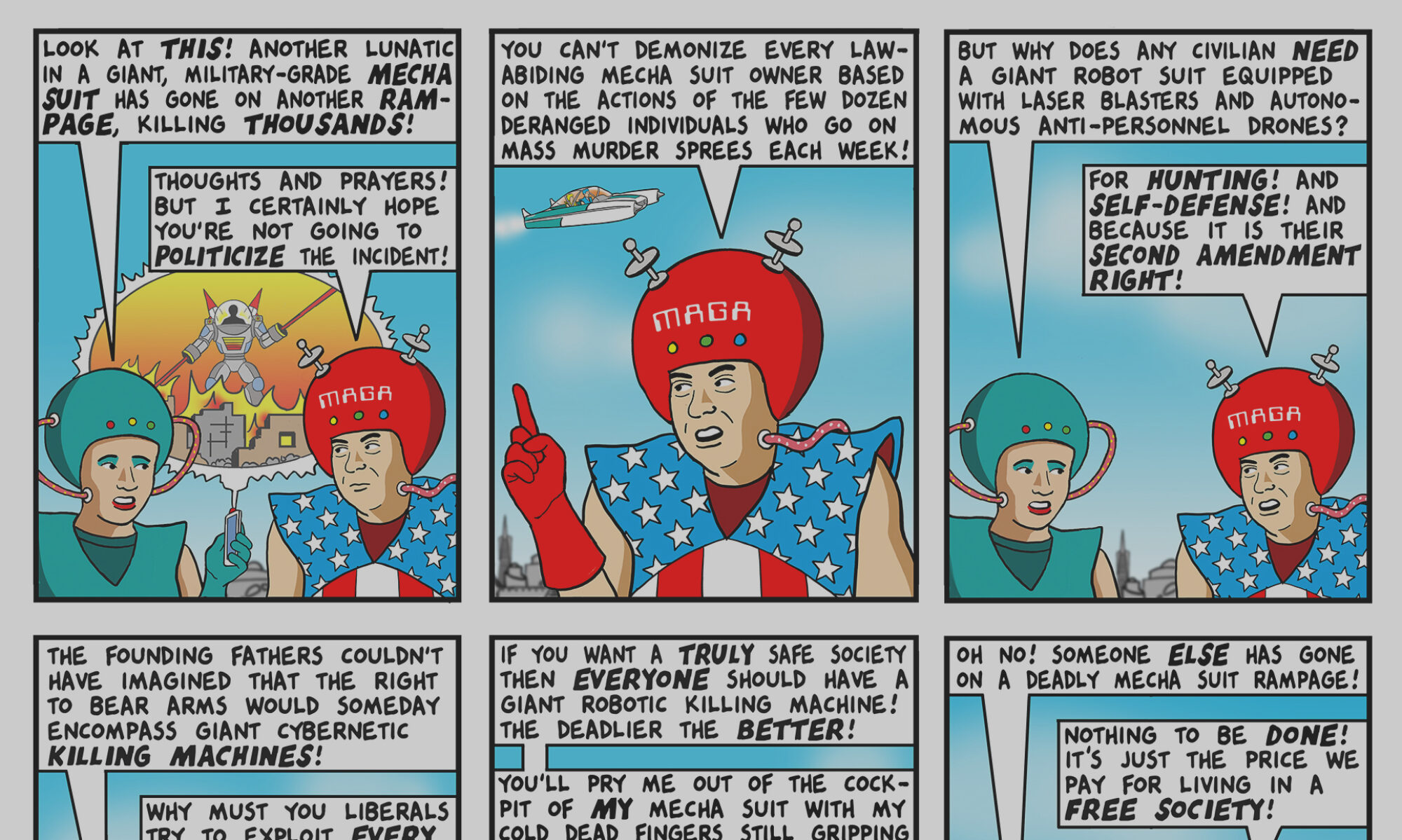I’ve gotta hand it to you Mr. President. You may be unable to defeat an insurgency, but you can really beat a metaphor to death :
This new threat required us to think and act differently. And as the 9/11 Commission pointed out, to prevent this from happening again, we need to connect the dots before the enemy attacks, not after.
. . .
You know, there’s an interesting debate in Washington, and you’re part of it, that says, well, they didn’t connect the
dots prior to September the 11th — “they” being not only my administration, but previous administrations. And I understand that debate. I’m not being critical of you bringing this issue up and discussing it, but there was a — you might remember, if you take a step back, people were pretty adamant about hauling people up to testify, and wondering how come the dots weren’t connected.Well, the Patriot Act helps us connect the dots. And now the United States Senate is going to let this bill expire. Not the Senate — a minority of senators. And I want senators from New York or Los Angeles or Las Vegas to go home and explain why these cities are safer. It is inexcusable to say, on the one hand, connect the dots, and not give us a chance to do so. We’ve connected the dots, or trying to connect the dots with the NSA program. And, again, I understand the press and members of the United States Congress saying, are you sure you’re safeguarding civil liberties. That’s a legitimate question, and an important question. And today I hope I’ll help answer that. But we’re connecting dots as best as we possibly can.
Now Mr. President, I’ve got a homework assignment for you.Sometime over the holidays, you need to read the two big 9/11 reports, the Congressional Joint Inquiry into Intelligence Failures and the one published by the 9/11 Commission (which can be found at Barnes & Noble). By “read”, I don’t mean having an aide verbally paraphrase the portions of the executive summary that agree with your worldview, but actually read the whole thing. If there are any big words, try sounding them out slowly and look up the definitions if you aren’t sure what they mean. When you’re done, come back and read the rest of this post.
[ Pause here to read the 9/11 reports and reflect on their contents. ]
Wow, that was a tough one, huh? What did you think? Do you think there are things that our government could have done better? Yeah, that’s right, we should “connect the dots”. Do you know what that phrase means? Look at the picture below :

Now if the picture above was the intelligence failures described in the 9/11 reports, what do you think those dots would represent? No, they don’t represent “evildoers”, they represent bits of intelligence. Number one, for example, might represent the “Phoenix Memo” that described a possible terrorist plot by terrorists to hijack a plane and crash it into CIA headquarters. Number two, could be the reports of suspicious men in flight training schools who wanted to learn to fly 747’s but didn’t want to know how to land. The third could be the FAA directive to commercial airliners that terrorists may try to board planes.The fourth could be the “chatter” that resulted in the PDB “Bin Laden determined to strike in US”. And so on….
So how do we put these disparate pieces of information together? Yeah, you connect the dots, but how does that work? In some places it means making sure any Arabic communications have been translated. In others it means ensuring that information is shared between various government agencies. And in others, it means cutting through bureaucratic red tape. And once those lines are drawn from one to two to three, then it means having someone step back with a view of the big picture and say “Hey, that’s George Washington”.
Which leads me to why I think you need a refresher course in dot-connecting. What happens when you order warrantless wiretaps, confiscate library records, and spy on mosques and peace protests? It doesn’t make the picture easier to see, it just adds a lot more dots. We don’t need to be making the whole thing more complicated, we need to make it easier to draw lines. That’s why the NSA wiretaps and the PATRIOT ACT are bad ideas. Yes, some portions of the PATRIOT ACT make it easier to draw the lines, but they don’t do much good when they’re lumped together with stuff that just makes the dot-connecting more confusing.
Did you like the movie Die Hard? I thought it totally kicked ass, but at the end of the day, it was just a movie. In real life, the bad guys don’t go wandering around giving monologues about their plans and motives. But that’s what I’m afraid is motivating your current obsession with collecting intelligence. Stop me if I’m wrong here, but it seems like you’re endlessly looking for a “smoking gun” like a wiretapped phone call saying “Tomorrow morning, me and my eighteen friends are gonna hijack planes and crash them into buildings. Don’t tell anybody”. But all this waiting around for something that isn’t likely to happen is fraught with two problems. Number one, you’re collecting so many phone calls and emails that there aren’t enough people around to translate them quickly enough. Number two, your search for obvious intelligence may lead to ignoring mountains of vague intelligence that could lead to the same conclusion.
Which all leads me back to the 9/11 reports that I had you read earlier. Remember the conclusions they reached? It wasn’t that they didn’t have enough information to foil the hijackers, but that they didn’t, say it with me, Connect. The. Dots. So what is the lesson here? That the problems leading up to 9/11 weren’t with intelligence collection but with analysis of that evidence. Got it?
